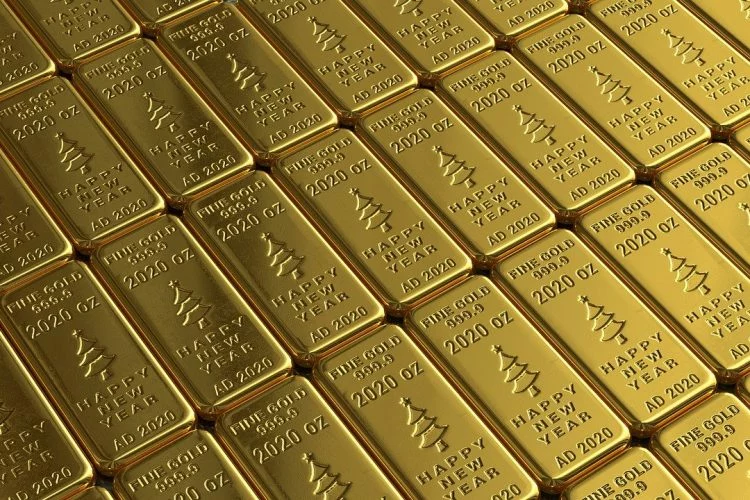Keeping an eye on the gold news is important, especially when it comes to the value of your investment. It’s not only about the price of gold, but also about the economic and geopolitical factors that could affect it. The article below provides some information on the factors that might influence it.
Table of Contents
Interest rate hikes
During interest rate hikes, the gold price usually rises. However, some investors and market commentators are concerned about inflation and its potential effects on gold prices.
Many economists expect a recession in the United States this year. A slowdown in the economy will affect employment and wage growth, and devalue the U.S. dollar. These effects are largely reflected in the price of investment assets, like stocks and bonds.
However, it has been hard to quantify the impact of interest rate hikes on gold prices. There are many factors that affect the price of gold. These factors include supply and demand. If there is an increase in the supply of gold, the price will fall. On the other hand, if there is a decrease in the supply of gold, the price may rise.
The Fed has raised rates by an average of three percentage points this year. The next hike is expected in November. However, some Fed officials are signaling that they want to slow down the rate hikes.
The Fed has been raising rates since June 1999. The Fed is aiming to keep inflation in check. This should help increase the appeal of gold.
Some economists are also concerned that the Fed is moving too fast. A Wall Street Journal article says that Fed officials are concerned that the Fed is “overtightening.” They may not need to increase rates as quickly as expected.
Some investors are betting that the Fed will raise rates. According to the CME FedWatch Tool, there is a 73.5% chance of a Fed rate hike next month.
The Fed has also hinted at further interest rate hikes in the future. Some Fed officials have said that they want to stop raising rates early next year.
However, the Fed is expected to raise the Fed Funds rate to 4.0% per annum by the end of the year. This will be the first increase since March 2018.
Some market commentators expect this to be the last interest rate hike by the Fed. Other commentators predict that gold prices will fall when the Fed raises rates.
Inflation
During the early months of the year, gold prices skyrocketed as investors were concerned about the threat of an invasion by Russia. Since then, gold has fallen nearly 20 per cent, and is currently in freefall. Some analysts believe that the recent rise in rates by the Federal Reserve and other major central banks have pushed gold prices down. Historically, gold prices have been higher during periods of high inflation.
In the past, the US Fed and other central banks have taken aggressive action to control rising inflation. The Federal Reserve has raised interest rates by three-quarters of a percentage point since March, and is expected to raise them again in May.
This year, the dollar has strengthened significantly against the rest of the world’s major currencies. The US Dollar is now up 16% against a basket of major currencies, and has climbed more than 9% this year.
The US Dollar’s strength is largely due to the Fed’s aggressive hiking cycle. Traders have priced in a 71.5 percent chance that the Fed will raise rates by 50 basis points in December. In the meantime, markets are anticipating at least four rate hikes in 2022.
The US consumer price index rose 0.4% in October, a slowdown from the previous month’s 0.6% advance. Moreover, the core rate — which excludes food and energy costs — slipped 0.3 points from September’s fresh four-decade high. This should help ease pressure on gold. However, it could also mean slower Fed rate hikes.
Gold prices have fallen in the past month, a decline that has seen gold fall more than 20 per cent since hitting US$2,087 an ounce in March. A strong dollar and high inflation in the US and Europe have sparked the gold price drop.
While the Fed has signaled significant rate hikes, markets are not convinced that the Fed will actually raise rates. The Citi Economic Surprise Index, which tracks US inflation, remains in positive territory. The gap between headline and core CPI inflation could become a concern for officials.
Gold prices may fall again due to the upcoming US inflation report. The October CPI report is expected to show a slower y/y advance. However, a positive CPI could increase Treasury yields.
Geopolitical risks
Despite the recent positive gold news, there are a number of geopolitical risks to watch out for. These include the potential for economic sanctions, slowing growth, higher uncertainty, and a halt in international trade. There’s also the risk that governments may try to capitalize on the higher price of commodities.
Gold has been considered a safe haven during times of turmoil. The price of gold often spikes following a geopolitical event. However, this relationship is complicated.
Geopolitical risks are usually overstated. For example, the rumor that there will be a new Cold War is unlikely. Also, gold does not always perform well in times of crisis.
The price of gold spiked after the US bombed Libya in 1986. However, gold’s price didn’t spike following the US bombing of Iraq in 1990. There’s a correlation between gold and war, but it’s hard to quantify it.
Another example of a spike in gold is the rise following the Ukrainian invasion of Crimea. However, the situation in Ukraine is unlikely to affect the price of gold in the short run.
A much less likely scenario is the invasion of Taiwan by China. However, there’s also a good chance that the U.S. and its allies will have to give up Taiwan. This would result in a more tangible impact on the gold price. The gold price would also likely respond to a conflict between India and Pakistan.
Similarly, the geopolitical risks of a conflict in the Middle East would likely be more relevant to the gold price than a conflict in Taiwan. There’s also the potential for a nuclear war.
While there’s no guarantee that any of these events will impact the gold market, it’s important to understand how these events could affect the price of gold. If they do, gold could be a stronger market performer in the short run. However, there’s also the possibility that these events will be overstated.
The price of gold is driven by a variety of factors, including supply and demand. While a number of factors can influence the price of gold, some of these factors are more important than others.
Recent drivers
Historically, gold prices tend to rise when economic conditions are worsening and market uncertainty rises. But the relationship between inflation and gold prices has slowed down in recent years. This is one reason why many investors believe gold is a safe haven in a market downturn. In a high-interest rate environment, the opportunity cost of holding non-yielding bullion increases.
The value of gold depends on many factors. The economy, the strength of the US dollar, inflation, and market risk all contribute to the price of gold. The strength of the dollar is important because it can either increase or decrease the cost of holding gold.
Gold prices are also influenced by market momentum. Market momentum affects gold prices by increasing or decreasing demand for gold. The momentum of gold prices also impacts their long-term performance.
The Fed expected to raise interest rates several times this year. The Fed is expected to raise rates by 50 basis points in May. The Fed is expected to increase rates again in July. The Fed expects to raise rates four times in 2022.
Inflation, which erodes the purchasing power of currency, is another factor that can impact gold prices. Inflation is likely to tick higher in the second half of this year. Besides inflation, the Fed also expected to counter runaway inflation. The Fed’s aggressive stance could help bolster its rate hikes.
The Fed’s rate hikes could put a negative pressure on gold prices. Analysts at UBS have predicted that gold prices will drop to $1,600 by year’s end. They advised hedging strategic gold holdings.
A recent report from Goldman Sachs has raised its 12-month gold forecast to $2,300 per ounce. The bank also expects the price to reach $2,500 by December 2021.
Gold has been a safe haven for centuries. The demand for gold increases with increasing economic and geopolitical risk. The decline in the value of the US dollar also increases demand for gold.
Gold prices are influenced by many factors, which makes them unpredictable. However, investors should keep gold as a hedge against market downturns for the long term.






